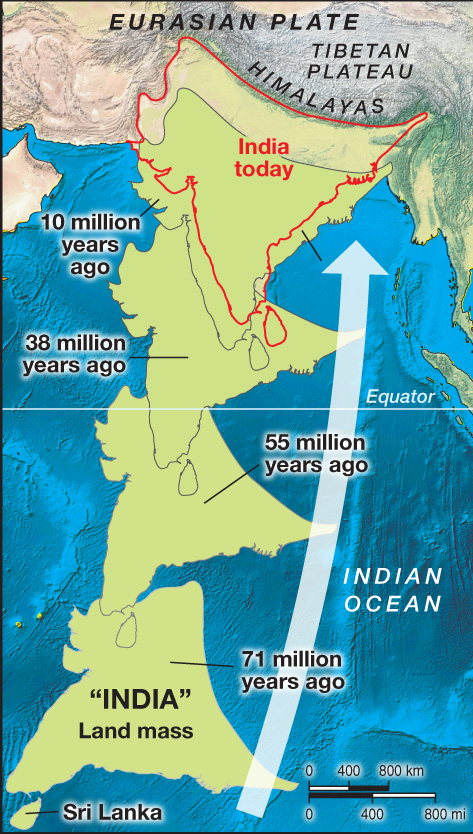
Figure 12.21
The collision between India and Eurasia. The Indian landmass, once located south of the equator, moved north with the Indo-Australian plate and collided with the Eurasian landmass. The Indo-Australian plate moved north at an absolute rate of about 15 cm (6 in) per year. The Indo-Australian plate is pushing beneath the Eurasian plate and lifting it up to create the Himalayas and the Tibetan Plateau. These landforms are rising at a net rate of about 5 mm (0.2 in) every year, or 50 cm (1.6 ft) every century. The fastest rates of uplift are roughly 10 mm (0.39 in) per year in the western Himalayas in Pakistan. As a whole, the Himalayas are the fastest-rising mountain range in the world. The depth of the Moho (the base of the crust) is about 70 km (43 mi) beneath the Tibetan Plateau. Nowhere on Earth is the crust thicker than beneath the Himalayas and Tibetan Plateau.

